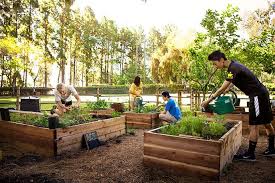By Ellia Fleury
Green homes have emerged as essential features in the lives of people who embrace sustainable living. These homes or constructions are unique structures designed to minimize environmental impact and resource consumption from the initial stages of construction to their eventual demolition.
Eco-Friendly Construction Materials
Natural materials, such as bamboo forests, recycled wood or metal from scrap yards, or refurbished metals, improve furniture’s aesthetic value and durability without emitting carbon (Bala & Gupta, 2023). Such metals are generally cheaper in terms of energy use and socially responsible in terms of their sources.
Energy Efficiency
Common interventions include installing solar systems, ensuring proper lighting and appliance use, and improving insulation. These interventions also improve energy consumption because they monitor and control the functions of smart home lighting, heating, and cooling systems.
Water Conservation
Low-flow faucets, showerheads, and rainwater harvesting are crucial from such a perspective. Another method of reducing water consumption in a household is the use of what is known as gray water recycling, where water used for lavatories, washing machines, and other non-portable uses can be recycled and used for the irrigation of the compound, among other uses.
Indoor Environmental Quality
For example, the home’s necessary characteristics include reduced toxicity of some materials, enough fresh air inside the house, and plants. It also has the advantage of minimizing diseases affecting the structure’s users and improving the quality of life.
Community and Location
Choosing a location close to car routes, bike stands, parks, and gardens reduces the use of cars and improves people’s health. Sustainable communities use commons to address often-present community needs, such as planting crops on a given piece of land or sharing tools in a tool-lending library.
With improved standards for using environmentally friendly materials, high-quality building materials that save energy and water resources, and an adequate focus on indoor environmental quality, it is possible to produce aesthetically and ergonomically acceptable structures while also being environmentally sustainable.
References
Bala, A., & Gupta, S. (2023). Engineered bamboo and bamboo-reinforced concrete elements as sustainable building materials: A review. Construction and Building Materials, p. 394, 132116–132116. https://doi.org/10.1016/j.conbuildmat.2023.132116

